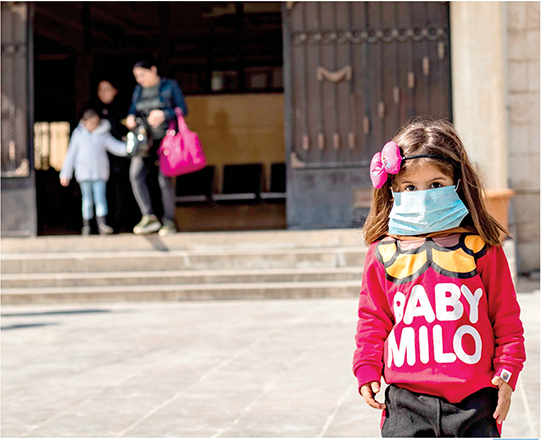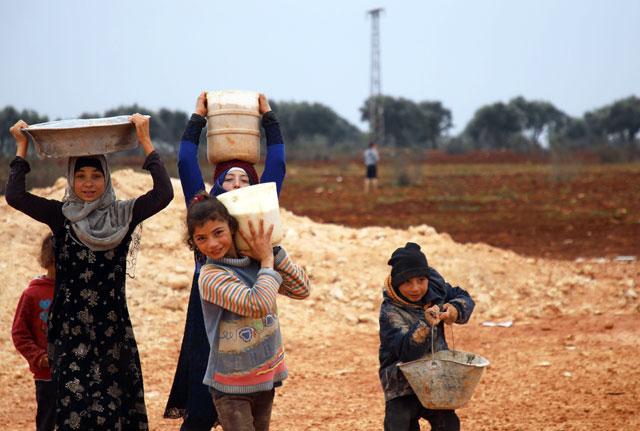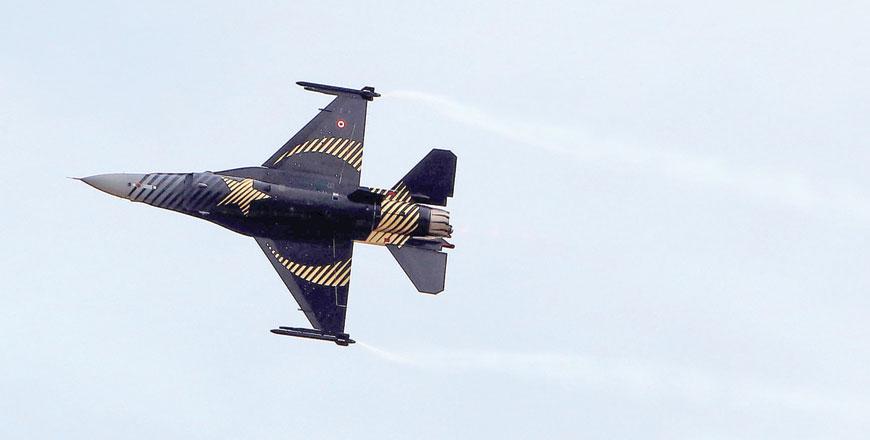You are here
Syrian army makes more gains but rebels fight back
Feb 28,2020 - Last updated at Feb 28,2020

A child wears a mask as a preventive measure against the coronavirus upon her arrival by bus in Syria's Kurdish area from Iraqi Kurdistan via the Semalka border crossing in northeastern Syria on Wednesday (AFP photo)
SARAQEB, Syria — Syrian rebels on Thursday reentered a key northwestern town they had lost earlier this month, reversing one of the main gains of the government's devastating offensive in the region.
The counteroffensive could be short-lived however and Syrian troops continued to chip away at other parts of the rebel bastion.
The UN Security Council was due to meet again on Thursday amid growing concern Idlib was witnessing the nine-year-old war's worst humanitarian emergency yet.
On Thursday, extremists and Turkish-backed rebels managed to reenter Saraqeb, a key crossroads town in Idlib province they had lost earlier in February.
State news agency SANA acknowledged that there were "fierce clashes" between the army and "terrorist groups on the Saraqeb front".
An AFP correspondent accompanied the rebels into Saraqeb, where he found a ghost town of bombed out buildings deserted by its inhabitants.
The counterattack by the rebels temporarily reverses one of the key gains notched up by the government since the launch of its offensive against the country's last rebel enclave in December.
Turkish casualties
The cash-strapped government had been keen to fully secure the M5, a highway which connects Syria's four main cities and passes through Saraqeb.
The Britain-based Syrian Observatory for Human Rights said that the air strikes were carried out by government ally Russia, which has come under heavy Western criticism for the high civilian death toll from its bombing campaign.
State media accused the “terrorists” of launching car bombings and other suicide attacks against government forces attempting to retake the town.
It said that the army had inflicted heavy losses on the attackers, despite the military support it said they had received from neighbouring Turkey.
Some 950,0000 civilians have fled the government offensive, raising fears in Ankara of a new mass influx of refugees.
Turkey already hosts the world’s largest number of Syrian refugees with around 3.6 million people, placing an increasingly unpopular burden on public services.
The Turkish defence ministry said on Thursday that two of its soldiers had been killed by government fire in Idlib, taking its losses this month alone to 19.
Turkey, which supports several rebel groups in the Idlib region, immediately responded to the attack by hitting Syrian “regime targets”, the ministry said.
UN powerlessness
President Recep Tayyip Erdogan vowed on Wednesday that Ankara would not take the “smallest step back” in the stand-off with Damascus and Moscow over Idlib.
He warned the Syrian government to “stop its attacks as soon as possible” and to pull back by the end of the month.
Under a deal with Russia intended to bring calm to Idlib, Turkey has 12 observation posts in the region but several have come under fire from the Syrian army.
The United Nations has warned repeatedly that the fighting in Idlib has the potential to create the most serious humanitarian crisis since the start of the war in 2011.
“As the UN Security Council meets today, it is urgent for Council members to adopt a resolution calling for a ceasefire in Idlib,” David Miliband, the chairman of the International Rescue Committee, said.
More than half-a-million of those displaced since December are children, tens of thousands of whom are sleeping rough in the harsh winter of northern Syria.
On Tuesday, several schools were hit by government artillery fire, prompting the jihadist-dominated administration in Idlib to temporarily close schools the following day.
Nine out of 15 members of the Security Council on Wednesday urged Secretary General Antonio Guterres to step up his involvement in efforts to restore peace in Idlib.
Related Articles
DAMASCUS — The Syrian army took control of a strategic northwestern crossroads town on Saturday, its latest gain in a weeks-long military op
BEIRUT — Syrian and Turkish troops traded deadly fire in Syria's northwest on Monday, further raising tension between Ankara and regime back
ANKARA — Turkey shot down two Syrian warplanes on Sunday in an escalating offensive against the Syrian government as Ankara pressured Europe


















